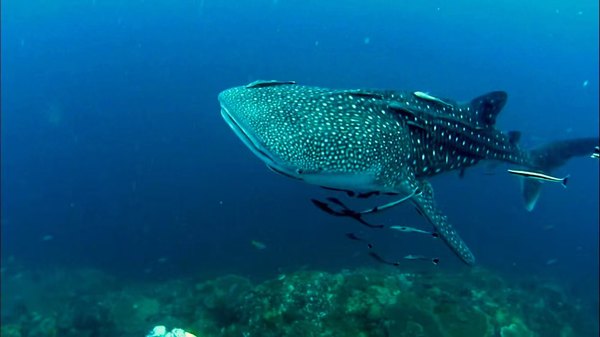雅思阅读的出题方向也是多样化的,与我们生活的方方面面都有关。水獭是一个非常讨人欢心的可爱萌宠,会卖萌杂耍。水獭躯体长,吻短,眼睛稍突而圆,耳朵小,四肢短,体背部为咖啡色,腹面呈灰褐色,那今天要分享的是一篇关于Otters水獭的雅思阅读原文,分别在2013年和2010年考过哦。考试都是有技巧可寻的,雅思的阅读和听力一样,要求考生合理掌握做题的节奏,如果同学们正确的掌握了做题的技巧,可以说是事半功倍的效果哦,所以今天小编还是大家带来了雅思阅读考试技巧。

一、otters雅思阅读答案解析
You should spend about 20 minutes on Questions 1-13, which are based on Reading Passage 1 below.
Otters水獭
A)Otters are scmiaqualic (or in the case of the sea otter, aquatic) monirnals. rHiey ure mi'inbers of the Mustelid family which includes badgers, polecats, martens, weasels, stoats an have inluibited the earth for the last 30 million years and over the years have undergone subtle changes to the carnivore bodies to exploit the rich aquatic environment. Otters have long liiin body and short legs~ideal for pushing dense undergrowth or hunting in tunnels. An adult male may be up to 4 feet long and 30 pounds. Females are smaller, around 16 pounds typically. The Eurasian otter nose is about ihc smallest among the otter species and has a characteristic shape described as a shidlow "W".An otter's tail (or rudder, or stern) is stoul at tlie base and tapers towards the tip where il flattens. ITiis forms part of the propulsion unit when swimming fast under water. Oder fur consists of iwo types of hair: stout guard hairs which form a waterproof outer covering, and undcrfiir which is dense and fine,equivalent to an otter's thermal underwear. The fur must he kept in good condition by grooming. Sea water reduces the waterproofing and insulating qualities of otter fur when salt water gets in the fur. This is why freshwater pools are important to otters living on the coast. After swimming, they wash the salts ofT in the pools and then squirm on the ground to rub dry against vegetation.
B) Scent is used for hunting on land, for communication and for detecting danger. Otterine sense of smell is likely to similar in sensitivity to dogs. Otters have small eyes and arc probably short-siglited on land. Bui they do have the ability to modify the shape of the lens in the eye to make it more spherical, and hence overcome the refraction of water In clear water and good liglit, otters can hunt fish by sight. The otter's eyes and nostrils are placed high on its head so that it c-an see and breulhc oven when the rest of die body is submerg'd, "The long whiskers growing iinmnd the muzzle are used to detect the presence of fish. They detect regular vihrutions cruised by the beat of the fish's tail as it swims awuy. I'his tdlows otters to hunt even in very murky water. Underwater, the otter holds its legs against the body, except for steering, and the hind end of the body is flexed in a series of vertical undulations. River otters have webbing which extends for much of the length of each digit, though not lo the very end. Giant otters ami sea otters have even more prominent webs, while the Asian short-clawed otter lias no webbing-they hunt for shrimps in ditches and paddy fields so they need the swimming speed. Otter ears are protected by valves which close them against water pressure.
C A number of constraints and preferences limit suitable liabitats for otters. Water is a must and the rivers must be large enough to support a healthy population of fish. Being such shy and wary creatures. they will prefer territories where mail's activities do nol impinge grcally. Of course, there must also be no other otter already in residence-this has only become significant again recently as populalions start to recover. A typical range for a mule river otter might he 25km of river, a female's range loss than half this. I lowcver, ihc pnMluclivity of the river affecls ihis hugely and one sitidy found male ranges between 12 and 80km. Coastal oilers havr a mucli more abundant Uwd supply aiul ranges for males and females may be just a few kilometers of coastline. Because male ranges are usually larger, a male otter may find his range overlaps with two or three females. Otters will eat anytliing that they can get hold of there are records of sparrows and snakes and slugs gobbled. Apart from fish the most common prey are crayfish, oralis and water birds. Small munmmls are occasionally taken, most mmmonly rabbits but soinelimes even moles.
B)D )Eurasian otters will bretnJ any time where food is readily available. In places where condition is more severe, Sweden for example where the lakes are frozen for much of winter, cubs arc bom in Spring, This ensures that they are wdl grown before severe weather returns. In the Shetlands. cubs are bam in summer when fish is more abundant. Though otters can breed every year, some do not. Again, this depends on food availability. Other factors such as food range and quality of the female muy have an effect. Gestation for Eurasian otter is 63 days, with the exception of North American river otter whose embryos may undergo delayed implantation.
E )Otters normally give birth in more secure dens to avoid disturbances. Nests are linceing the most common). For some unknown reason, a^astal otters lend to produce smaller litters. At five weeks they open their eyes~a liny cub of 700g. At seven weeks they're weaned onto solid food. At five weeks they leave the nest, blinking into daylight for the first time. After three months they finally meet the water and learn to swim. After eight months they are hunting, though the mother still provides a lot of food herself. Finally, after nine months she ttan chase them all away with a clear conscience, and relax-until the next fella shows up.
F) The plight of the British oiler was recognised in the early 60s,but it wasn^t until the late 70s that ihe chief cause was discovered. Pcslicides. such as diddrin and aldriiu were first used in 1955 in iigriculture and other industries--these clicmiads are very persistenl and liad already been recognised as the muse of huge declines in the population of ficregrinc falcons, sparrowhawks and oilier predators. The pesticides entered the river systems and the food chain-micro-organisms. fish and finally otters, with every step increasing ihc concentration of the chemicals. From 1962 the chemicals were phased out, but while some species recovered quickly, otter numbers did not and continued to fall into the 80s/niis was probably mainly to habitat destruction and road deaths. Acting on popuIations fragmented by the sudden decimalion in the 50s and 60s, the loss of just a handful of otters in one area can make an entire population unviable and spoil the end.
G )Otter numkiers anr recovering all around Britain--populations arc growing again in the few areas where they had remained and have expanded from those areas into the rest of the country. This is almost entirely due to law and conservation efforts, slowing down and reversing the destruction of suitable otter habitat and reintroductions from captive breeding programs. Releasing captive-bred otters is seen by many as a last resort, The argument runs that where there is no suitable habitat for them they will not survive after release and when there is suitable habitat, natural populations should be able lo expand inlo the area. However, reintroducing animals into a fragmented and fragile population may add just enough im|petus for it to stabilise and expand, rather than die out. This is what the Otter Trust accomplished the 1980s. The Otter Trust has now finished its captive breeding program entirely. Great news because it means it is no longer needed.
题目:
Questions 1-9 Reading Passage 1 has seven paragraphs, A-G.
Which paragraph contains the following information?
Write the correct letter, A-G, in boxes 1-9 on your answer sheet.
NB You may use any letter more than once.
1 A description of how otters regulate vision underwater
2 The fit-for-purpose characteristics of otter's body sape
3 A reference to an underdeveloped sense
4 An explanation of why agriculture failed in otter conservation efforts
5 A description of some of the otter’s social characteristics
6 A description of how baby otters grow
7 The conflicted opinions on how to preserve
8 A reference to a legislative act
9 An explanation of how otters compensate for heat loss
Questions 10-13
Answer the questions below.
Choose NO MORE THAN TWO WORDS from the passage for each answer.
Write your answers in boxes 10-13 on your answer sheet
10 What affects the outer fur of otters?
11 What skill is not necessary for Asian short-clawed otters?
12 Which type of otters has the shortest range?
13 Which type of animals do otters hunt occasionally?
二、雅思阅读做题技巧
1.快速浏览全文
考生最好用1—2分钟大致浏览全文,以便掌握文章的结构。
这一步骤虽短,但却是训练及解题过程中的重点。文章的篇章结构模式可以帮助考生更好地理解内容,并理顺句子或段落间的关系,以便在做题过程中有重点的跳读。
例如:在Cause-Effect中,浏览重心应放在Effect上;而在 Comparison /Contrast / Concession中,考生应把注意力放在某个转折点之后的内容;而见到属于Addition/Defining /Explanation/Description的部分,则可以直接跳过去。这种方式能大大降低文章的阅读量。
2.解析题目
首先,无论遇到哪种题型,考生都应尽可能地找出一些关键词,以便迅速定出答案可能所在的区域。其次,考生应对各种题型有较深入的理解。
尤其是每种题型的应对方法。拿Matching的题来讲,在General Reading和Academic Reading中就不一样,一个是Matching of Information,另一个是Matching of Paragraph Headings,两种题型的做法不一样,在前者,考生应将注意力集中在题中,将每个问题的核心词标出来,然后根据这些核心词去文中找相应的信息。
在后者,考生的注意力应放在归纳文章上,在进行核心词分类后,就要对文章的结构和每段的重心进行归纳与分析,找出各段的主题词,然后在段落的首句中找出相应信息。
3.注意词形变化
考生一定要特别注意词形变化、同(近)义词或是相关词,因为题目中出现的词不一定和文章中出现的词一模一样。
考生在平时训练中尤其要培养这方面的敏感度。核心词尽量以信号词为主,其次才是关键词,这一找信息的方法尤其适用于雅思阅读考试中的“Gap-filling、Table/Graph Filling、Sentence Completion、Short Answer Question、True/False以及Multiple Choice题目。
4.攻克单词和句子阅读
IELTS阅读是考试一大难点,很多考生在阅读上失手。其主要存在以下几个难点:单词、句子阅读、阅读速度和考生主观臆断。
准备单词卡片,循环背诵一般IELTS阅读中涉及词汇量比较大,但考生具备4000左右即可应考。单词贫乏的考生,一定要及时补充词汇,打下扎实的基础。在应试时很容易遗忘或混淆单词的意义,为了避免类似情况发生,一定要加强单词意义的理解。
5.句子参考上下文,分析主谓结构
在句子理解方面,考生最容易犯的错误就是根据自己已有经验片面理解。
IELTS阅读中有的题目考的是对于文章中某一句子的理解,要参考上下文客观地看问题。考生应对一些复合句,尤其是双重否定句、比较句、指代句等有较深了解。
特别在遇到复杂句时,应静心思考,从把握句子主干一一主谓结构着手来分析解剖句子结构。
6.学会做标记
雅思阅读追求速度(speed)与准确度(accuracy)的完美结合。快而不准或准而太慢都会影响考分。考生在勤奋练习的时候掌握一些阅读技巧将达到事半功倍的效果。
快速阅读最关键的是在扫描全文的时候把握每段的主旨,并做出标记,在看完全文后对文章的结构主题有大致的了解。此外,考生以单词为单位看文章,遇生词就停顿等坏习惯都要极力避免。
三、雅思阅读得分注意这四大习惯
习惯1、从阅读习惯上讲,单纯以学习英语为目的的阅读和以获取信息为目的的阅读存在很大差异。
前者是一个语言知识积累的过程,后者是以语言知识和能力为工具达到获取有用信息的过程。雅思阅读强调把握信息的能力,所以要培养上述第二种习惯。很多同学在参加雅思考试之前,都只是把英语当成一个学习的对象,而未能上升到把英语作为工具来使用的阶段。所以,在阅读过程中,往往陷入逐字逐句的意思理解和语法分析,依然持学英语的习惯。没有去识别信息的主观意图,当然谈不上习惯不习惯,更谈不上把握信息的能力。
习惯2、养成习惯的,首先要确立以把握信息为目的的主观意图。
刚开始时不要怕慢,不是去完整地理解句子的意思,而是刻意的猜测句子在段落中的功能。以下面一段文字为例: (1) Care needs to be taken with religious items. (2) There have been a number of incidents over the years involving foreigners that have drawn a strong reaction from an offended government and people - for example, the family of tourists who foolishly clambered all over a revered Buddha statue. (3) When buying an object, it is important to distinguish between the object's aesthetic appeal and its religious significance. (4) Representations of the Buddha, for example, must be placed at ....句(1)当中的needs to be taken 表示“需要、应该”,显然是作者的态度和观点,当表示态度或观点的句子出现在段首,通常是topic sentence , 信息。小编还是要提醒大家注意总结雅思阅读资料,多了解一些雅思阅读得分技巧。句(2)There be 句型表事实,事实跟在观点后,毫无疑问是充当论据的角色。句子中的核心名词 incidents是复数,表示这个句子对下文具有结构性功能,下文会论据进行细节性列举。句(3)it is important to do 表示作者对某个事情的认知和判断,出现在两个 for example中间,是一个细分的判断。句(4)中的for example,表明它是个细节性的论据。对信息的识别,往往不需要理解太多的词汇的意思可以做到。
习惯3、习惯的养成需要一个过程,这个过程时间上可以缩短。
可以找一些段落刻意的去分析,开始时会很慢,甚至比你搞清全部的细节意思还要慢。但是,经过一段时间的操练,会收到意想不到的效果。
习惯4、下面给大家一信息的线索:
a. 判断句在段首、b. 强调句在段尾、c. 祈使句在段首、d. "But, However, 等转折词后的句子、 e. “for example”前的句子、 f. 问号后的句子、g. 表观点的句子永远比表事实的句子重要、h. 段落以细节信息开头,看段落的一句话。等等。
四、怎么提升雅思口语

我们精心为大家整理的《otters雅思阅读答案解析 雅思阅读做题技巧》文章不知道大家满不满意,如果大家想了解更多语言培训相关的信息,请关注语言培训栏目。
本文来源:
https://www.dsxliuxue.com/news/75209.html





















